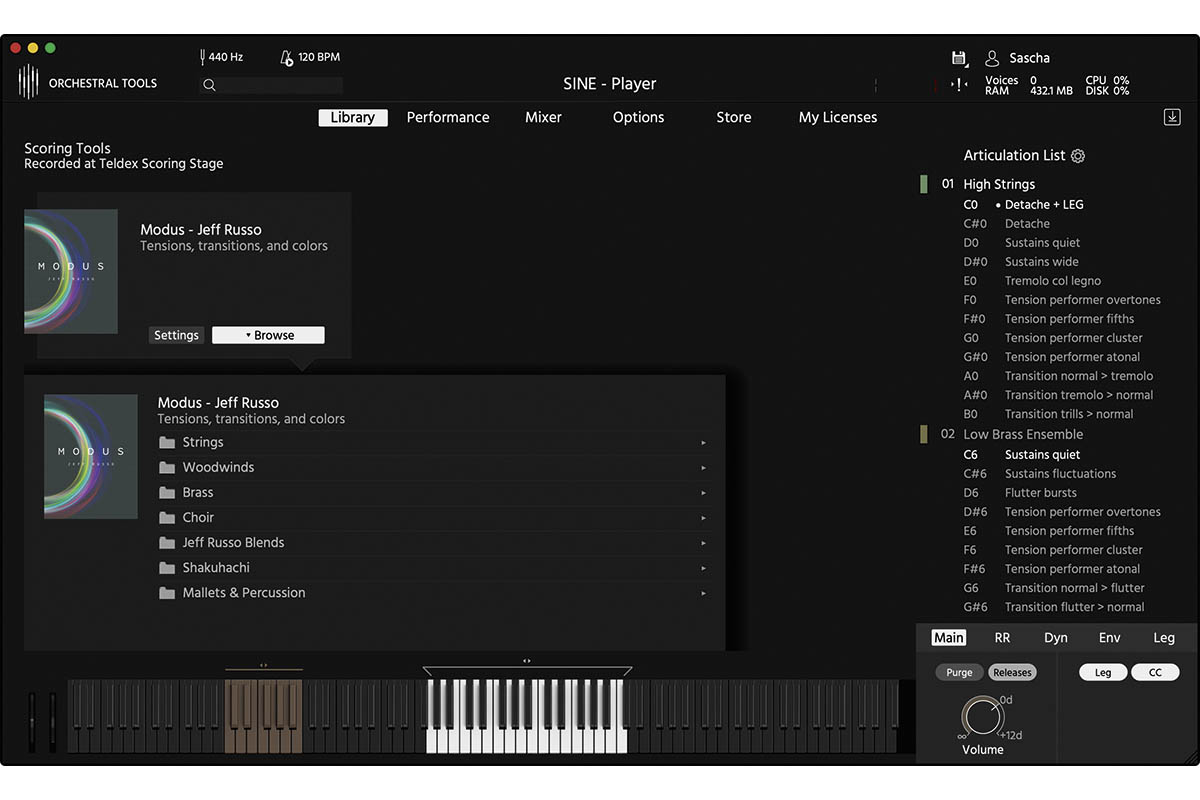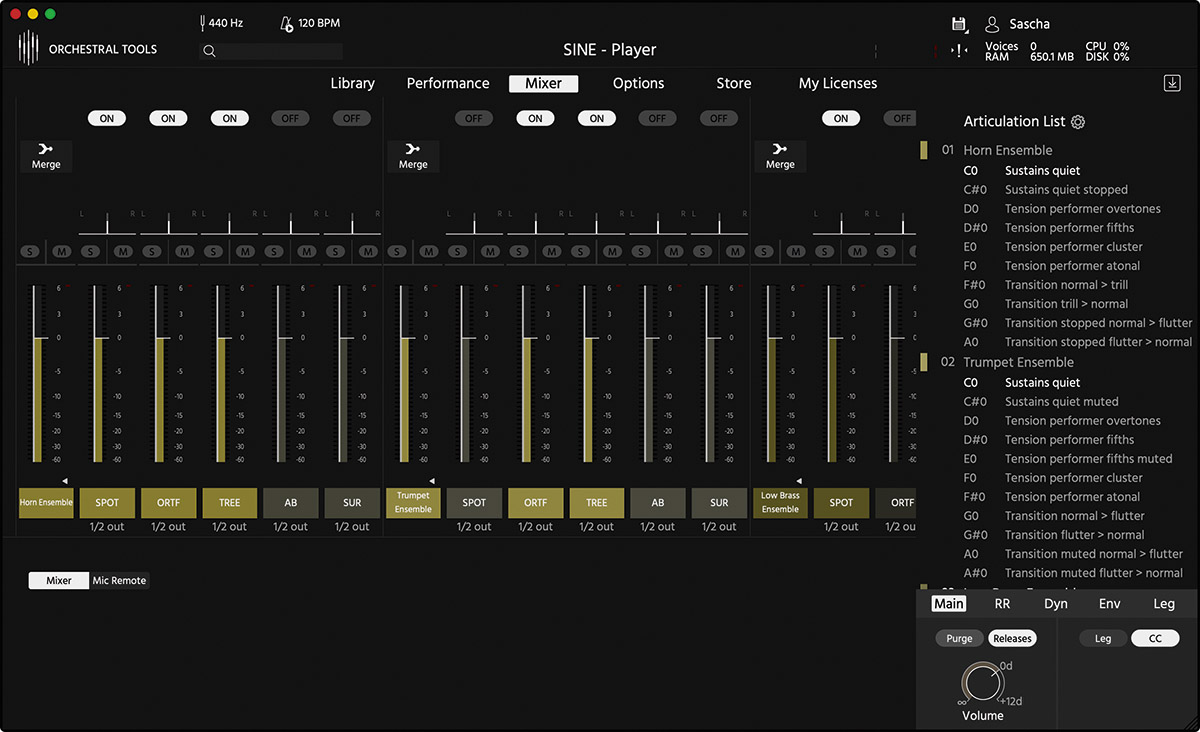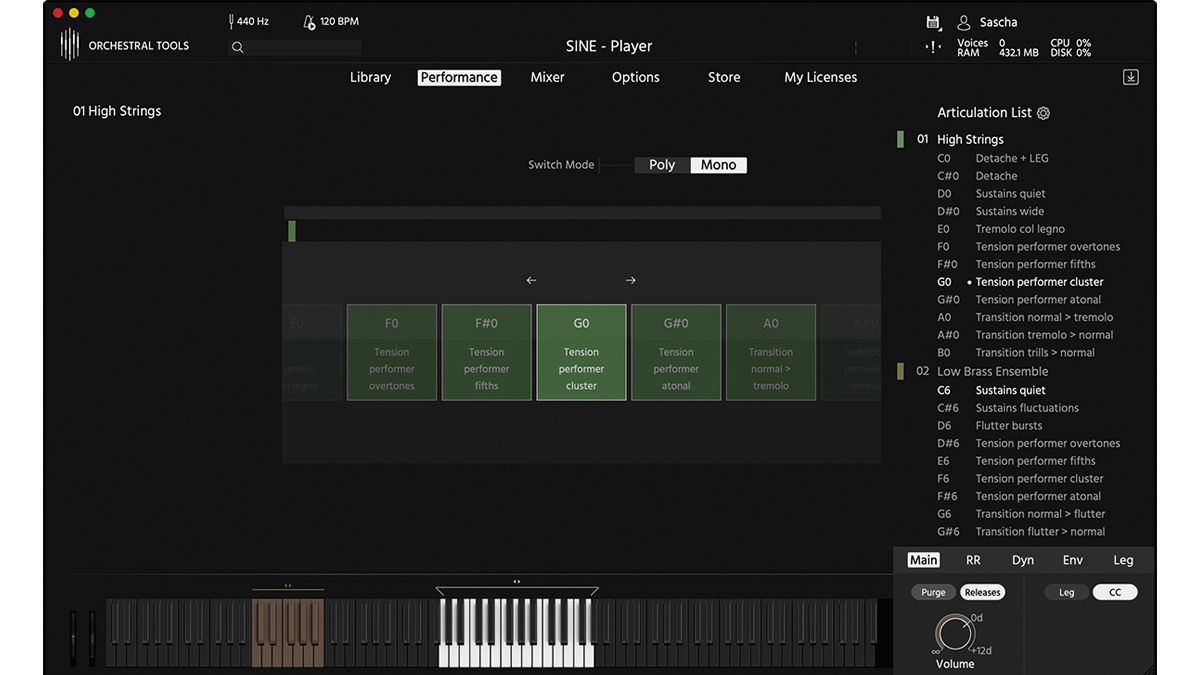MusicRadar Verdict
This is a hugely characterful orchestral toolkit, impeccably designed for modern soundtracking purposes.
Pros
- +
A pro cinema toolkit for all.
- +
Dismantle and purchase just the ensembles you need.
- +
Great sound design capability.
- +
Klingon choirs!
Cons
- -
More round robins please.
- -
Occasionally slow with larger patches.
MusicRadar's got your back
What is it?
Since 2009’s slickly rebooted, JJ Abrams-helmed movie, the Star Trek franchise has enjoyed a reinvigorated decade, with successive blockbuster movies, and two uniformly cinematic TV series hoovering up viewers and plaudits. Part of TV Trek’s new appeal is its sense of larger ambition, stressed by glossy, impressive scores.
Jeff Russo is the composer responsible for the orchestral magic of both Star Trek: Discovery and Star Trek: Picard and in collaboration with Orchestral Tools, now offers up access to his unique palette of sounds, while simultaneously shedding light on some of the innovative methods he uses for creating effective tensions and movement.
As per Orchestral Tools’ product range, Modus’s 21 individual instruments were painstakingly captured at Berlin’s legendary Teldex Scoring Stage, as well as a range of orchestral ensembles, percussion sounds and male, female and – no lie – Klingon, choirs.
Modus’s goal, however, isn’t just to present a pro-sounding toolkit of impressive orchestral flavours. The package very much wants you to adopt a similar creative mindset to Russo, with suspense-inducing tensions, dramatic transitions and atmospheric, evolving pads, or ‘Continuums’ as they’re labelled, providing users with deeper insight into a modern composer’s approach to audience manipulation.

First contact
Downloading the software via Orchestral Tools’s bespoke Sine Player framework is quite refreshingly straightforward, with the ability to cherry-pick just the instruments and mic positions you require a welcome space – and money-saving consideration. For the purposes of our tests, however, we go all in and grab the whole kit and caboodle.
Though Sine can be opened as a standalone player, we opt to give it a spin as an AU inside Logic and begin by browsing through the instrumental colours on offer. It’s quickly apparent that this is clearly an exceptionally recorded collection, however, you choose to position your mics.
Both High and Low Strings are presented with a range of articulations, including natural-sounding détaché and smooth legatos, while the woodwinds and the clarinets, flutes and bassoon all uniformly conjure serene character. The Horns, Trumpets and Low Brass collections effortlessly exude the majesty of Star Trek’s scores past and present while both female and male choirs have a haunting, ethereal quality.
Want all the hottest music and gear news, reviews, deals, features and more, direct to your inbox? Sign up here.
The aforementioned Klingon choirs, divided as they are into marcato and staccato intonations, are a hysterically fun inclusion – and emphasise the Trek-aligned intent of this pack. But, the novelty of introducing an angry-sounding army of Klingons to our favourite pop tracks aside, it’s hard to see how useful this will be to general music-makers.
Voyage of discovery

Winning an Emmy for his work on Fargo, and defining the aural universe of Star Trek since its return to TV in 2017, composer Jeff Russo’s limited time frame per episode resulted in a need for quicker routes to build his scores.
Enter Orchestral Tools, who – working with Russo – developed Modus to serve not just as a commercial product, but as a personally-tailored workflow enhancer. Russo’s stamp is all over this pack, from his approach to unconventional articulations, the expressive performance options and the addition of patches that follow two instruments performing the same part – a typical Russo tactic.
Not forgetting of course, that reliable choir of Klingons. What you’re purchasing here is more than a standard sample library, with its functionality geared towards helping one of the most respected composers in the biz do his job.
The importance of Teldex Studios to the Modus sound can’t be understated, with the acoustic properties of the studio coming into play once you alter certain mic positions. As the company has established a base recording their sample libraries here, Modus slots perfectly among its OT bedfellows, like the Berlin Orchestra and Metropolis Ark series.
Performance and verdict
Contrarily, the stunning combination patches are applicable to a range of needs, Piano & Violas and Alto Flutes & Violas both provide quick routes to vividly sumptuous textures, while the shimmering Vibes & Glock lift us into a suitably starry sonic cosmos.
The addition of Shakuhachi as a playable instrument came about from Russo’s own frustrating quest to find a way of easily having access to the Chinese flute’s distinctive sound, Orchestral Tools duly obliged, and the resulting recorded samples of the instrument in high D and low A are adaptable to a range of compositional types, with playable sustain, staccato and legato patches.
The best of both worlds
The instruments may be exquisitely recorded, but the breadth of Modus becomes apparent once we get into the tools and performance options. The Transition patches enable quick, organic-sounding tonal changes – a key component of underscoring.
These patches all generally start on one articulation, build to a climax and then shift to another articulation which is performed with a diminuendo (or decrease in volume, if you don’t speak classical). Having this pro-sounding fluidity at your fingertips is certainly a valuable boon over other libraries.
This natural-sounding transformation would work particularly in a soundtracking context when cutting to a new scene, or could possibly find application when seamlessly segueing between conventional music tracks. The four types of Tensions provide a speedy route to building up some spine-tingling textures.
By simply pressing one-note and gradually lifting the mod wheel you can introduce a range of harmonic tones as it traverses a variety of human-performed dynamic layers. Further to the addition of overtones, there are options to craft tensions with perfect fifths, a cluster of semitones (which can sound truly gargantuan) and chillingly atonal sounds.

• Spitfire Audio Albion One
Those preferring a hybrid electronic/organic sound will find there's plenty here too, while the percussion sounds are as at home underpinning trailers as they are picking out warped quasi-electronic pulses and rhythms.
• Orchestral Tools Amber
As part of SINE, Amber is a great instrument and a fantastic way to experience Orchestral Tools on a budget.
Our fruitful experimentation with each of these types swiftly demonstrates just how advantageous Modus’s speedy workflow could be to composers of all stripes.
Another string to the Modus’s sophisticated bow is the inclusion of a range of – suitably named – Continuums. The concept of these will probably strike a chord with those familiar with Orchestral Tools’s Time Micro and Macro. Essentially they are pads constructed via a fusion of dynamic and sustained instrumental sections, providing kinetic, unpredictable and often vast-sounding sonics.
Starting a track with a Continuum compels us to follow their atmospheric lead and work up interesting, cinematic constructs. In a professional scoring context, these will undoubtedly be incredibly useful as ready-to-go mood setters.
Orchestral Tools and Jeff Russo have built up a boundless array of composing avenues here, complementing some flawlessly recorded, highly-manipulable instruments. Despite occasional slowdown when patch-switching, and a dearth of round-robin variation for some instruments. Modus sits comfortably among the most superlative aids to soundtracking we’ve encountered. Go boldly.
MusicRadar verdict: This is a hugely characterful orchestral toolkit, impeccably designed for modern soundtracking purposes.
The web says
"Like Orchestral Tools’ Time Macro and Time Micro collections, the library (29GB installed) avoids the hacking strings, blasting brass and pounding percussion of conventional cinematic titles and focuses on subtle, atmospheric evolving textures and imaginative performance styles."
Sound On Sound
Hands-on demos
Orchestral Tools
Daniel James
David Kudell Music
Specifications
- TYPE: Sample library for TV scoring and underscoring, created with Jeff Russo
- KEY FEATURES: 21 instruments and ensembles, including shakuhachi, Klingon choir, Jeff Russo-designed custom instrument blends; instruments recorded at Teldex Scoring Stage, Berlin
- CONTACT: Orchestral Tools
Computer Music magazine is the world’s best selling publication dedicated solely to making great music with your Mac or PC computer. Each issue it brings its lucky readers the best in cutting-edge tutorials, need-to-know, expert software reviews and even all the tools you actually need to make great music today, courtesy of our legendary CM Plugin Suite.

